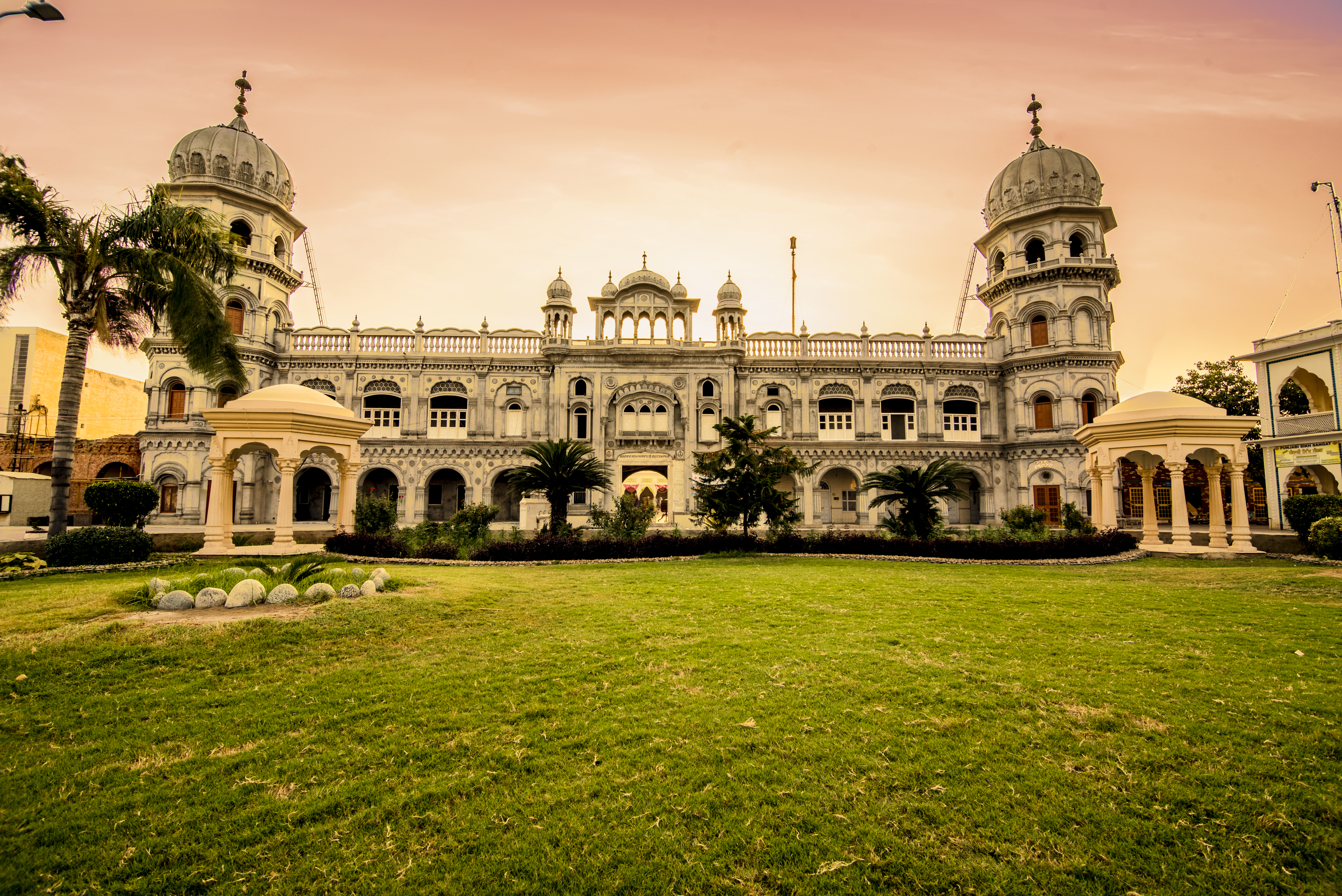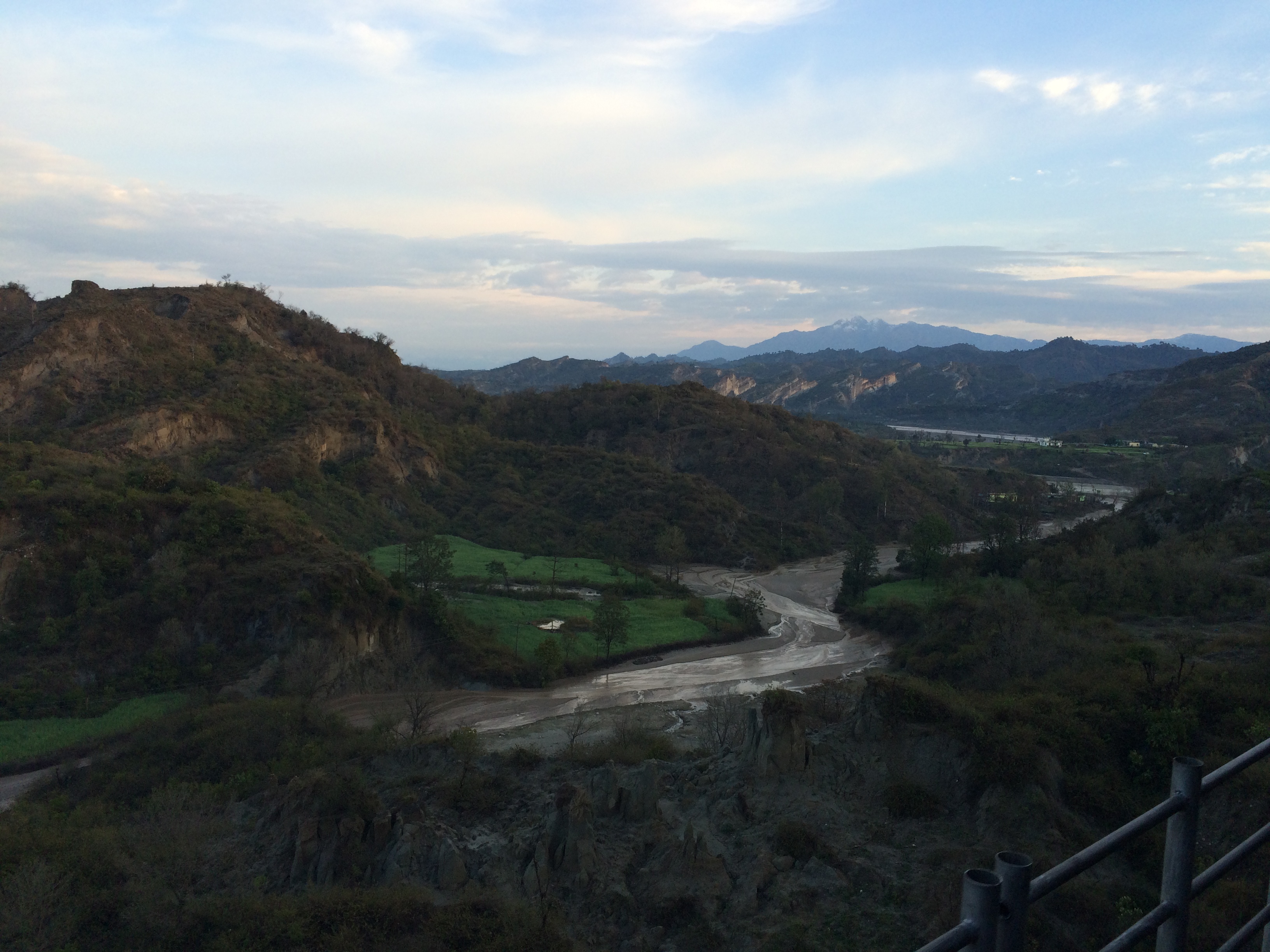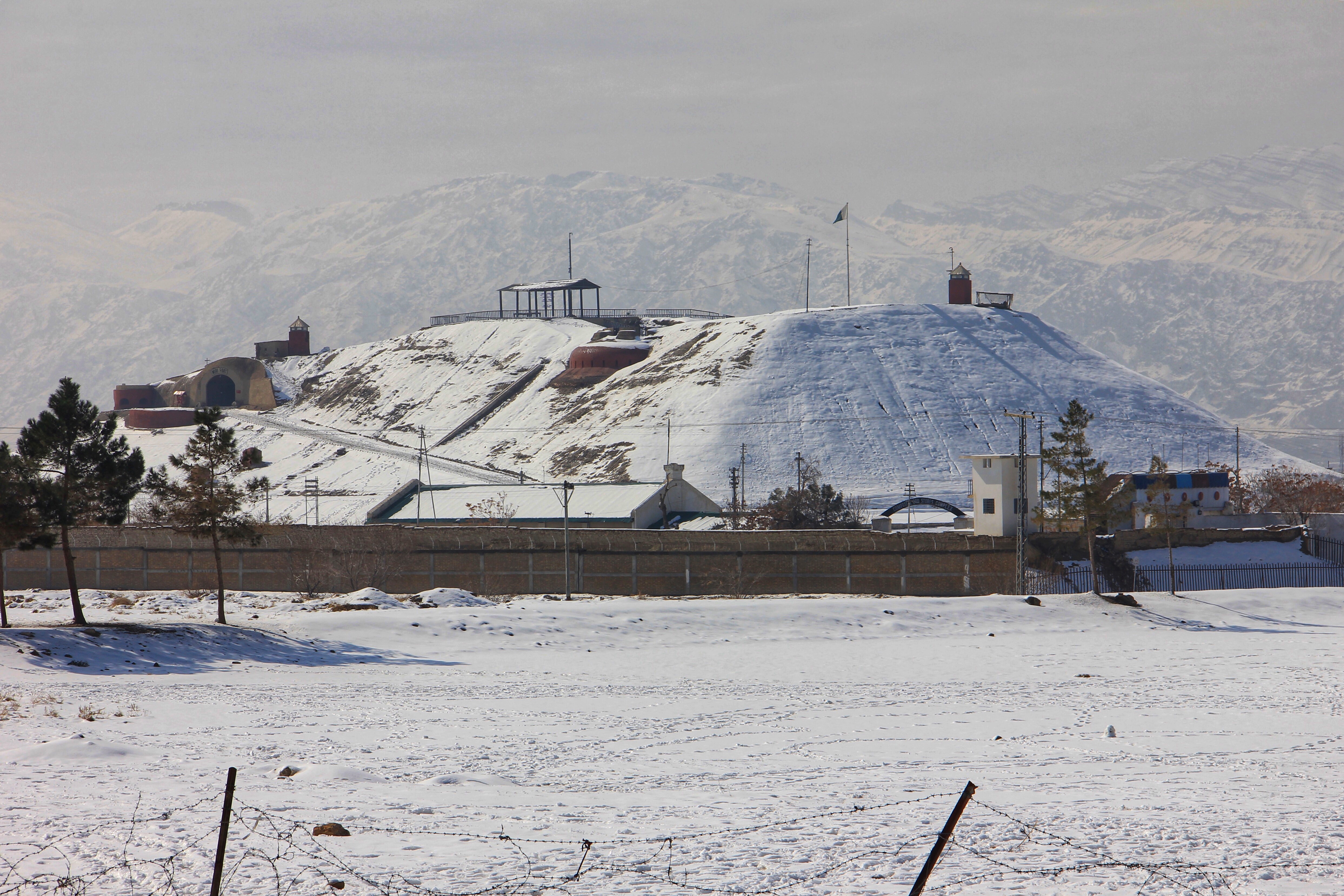|
Manpur, Pakistan
Manpur is a village in Sialkot District, Punjab, Pakistan. History Sialkot became a part of the Muslim Sultanate of Delhi when the Afghan noble Sultan Shahab-ud-Din Muhammad Ghauri conquered Punjab in 1185. He was unable to conquer Lahore but left a garrison in Sialkot. Later, Sultan Khusro Malik tried to capture the city but failed to do so. Sialkot then became a part of the Muslim Mughal Empire which was of Central Asian origin. The Mughal commander, Usman Ghani Raza, advanced towards Delhi by way of Sialkot which capitulated to his armies. In 'Babur Nama', Zaheer-ud-Din Muhammad Babur records: During the era of the Mughal Emperor, Jalal-ud-Din Muhammad Akbar, the present district of Sialkot formed a part of the Rachna-Bar Sarkar of the Lahore province. Under the reign of the Mughal Emperor, Shahab-ud-Din Muhammad Shah Jahan, Ali Mardan Khan held the charge of Sialkot. At the end of the Mughal dynasty, the suburbs and the outlying districts and areas of Sialkot were le ... [...More Info...] [...Related Items...] OR: [Wikipedia] [Google] [Baidu] |
Village
A village is a clustered human settlement or community, larger than a hamlet but smaller than a town (although the word is often used to describe both hamlets and smaller towns), with a population typically ranging from a few hundred to a few thousand. Though villages are often located in rural areas, the term urban village is also applied to certain urban neighborhoods. Villages are normally permanent, with fixed dwellings; however, transient villages can occur. Further, the dwellings of a village are fairly close to one another, not scattered broadly over the landscape, as a dispersed settlement. In the past, villages were a usual form of community for societies that practice subsistence agriculture, and also for some non-agricultural societies. In Great Britain, a hamlet earned the right to be called a village when it built a church. [...More Info...] [...Related Items...] OR: [Wikipedia] [Google] [Baidu] |
Multan
Multan (; ) is a city in Punjab, Pakistan, on the bank of the Chenab River. Multan is Pakistan's seventh largest city as per the 2017 census, and the major cultural, religious and economic centre of southern Punjab. Multan is one of the oldest continuously inhabited cities in Asia, with a history stretching deep into antiquity. The ancient city was the site of the renowned Multan Sun Temple, and was besieged by Alexander the Great during the Mallian Campaign. A historic cultural centre of the wider Punjab, it was conquered by the Ummayad military commander Muhammad bin Qasim. The city later became independent as the capital of the Emirate of Multan in 855 A.D., before subsequently coming under the rule of empires such as the Ghaznavids, the Ghurids and the Mamluks. In 1445, it became capital of the Langah Sultanate. In 1526, it was conquered by the Mughal Empire. Multan Subah would become one of the largest provinces of the Mughal Empire when it was created by administrative r ... [...More Info...] [...Related Items...] OR: [Wikipedia] [Google] [Baidu] |
Sikh
Sikhs ( or ; pa, ਸਿੱਖ, ' ) are people who adhere to Sikhism (Sikhi), a monotheistic religion that originated in the late 15th century in the Punjab region of the Indian subcontinent, based on the revelation of Guru Nanak. The term ''Sikh'' has its origin in the word ' (), meaning 'disciple' or 'student'. Male Sikhs generally have ''Singh'' ('lion'/'tiger') as their last name, though not all Singhs are necessarily Sikhs; likewise, female Sikhs have ''Kaur'' ('princess') as their last name. These unique last names were given by the Gurus to allow Sikhs to stand out and also as an act of defiance to India's caste system, which the Gurus were always against. Sikhs strongly believe in the idea of "Sarbat Da Bhala" - "Welfare of all" and are often seen on the frontline to provide humanitarian aid across the world. Sikhs who have undergone the '' Amrit Sanchar'' ('baptism by Khanda'), an initiation ceremony, are from the day of their initiation known as Khalsa, and they mu ... [...More Info...] [...Related Items...] OR: [Wikipedia] [Google] [Baidu] |
Jammu
Jammu is the winter capital of the Indian union territory of Jammu and Kashmir. It is the headquarters and the largest city in Jammu district of the union territory. Lying on the banks of the river Tawi, the city of Jammu, with an area of , is surrounded by the Himalayas in the north and the northern-plains in the south. Jammu is the second most populous city of the union territory. Three battles have been fought in the city: first by the founder Raja Mal Dev against Timur in Battle of Jammu (1399), second by Sardar Bhag Singh against Mughal army in Battle of Jammu (1712) and the third by Mian Dido & Maharaja Gulab Singh against Ranjit Singh's army in Battle of Jammu (1808). Known as the ''City of Temples'' for its ancient temples and Hindu shrines, Jammu is the most visited place in the union territory. Jammu city shares its borders with the neighbouring Samba district. Etymology According to local tradition, Jammu is named after its founder, Raja Jambulochan, who ... [...More Info...] [...Related Items...] OR: [Wikipedia] [Google] [Baidu] |
Ahmed Shah Durrani
Ahmad Shāh Durrānī ( ps, احمد شاه دراني; prs, احمد شاه درانی), also known as Ahmad Shāh Abdālī (), was the founder of the Durrani Empire and is regarded as the founder of the modern Afghanistan. In July 1747, Ahmad Shah was appointed as King of the Afghans by a '' loya jirga'' in Kandahar, where he set up his capital. Primarily with the support of the Pashtun tribes, Ahmad Shah pushed east towards the Mughal and Maratha Empires of India, west towards the disintegrating Afsharid Empire of Iran, and north towards the Khanate of Bukhara of Turkestan. Within a few years, he extended his control from Khorasan in the west to North India in the east, and from the Amu Darya in the north to the Arabian Sea in the south. Soon after accession, Ahmad Shah adopted the epithet ''Shāh Durr-i-Durrān'', "King, Pearl of Pearls", and changed the name of his Abdali tribe to "Durrani" after himself. The Tomb of Ahmad Shah Durrani is located in the center of Kandah ... [...More Info...] [...Related Items...] OR: [Wikipedia] [Google] [Baidu] |
Daska
Daska ( ur, ), is a city in the Punjab province of Pakistan. The city is the capital of Daska Tehsil, one of four tehsils of Sialkot District. It is the 50th largest city of Pakistan by population. It is 29th largest by population in Punjab. History 17th-19th centuries Daska was founded during the reign of Shah Jahan, and was initially named Shah Jahanabad, according to Mughal revenue records. It was later renamed Daska as it is ''das'' ("ten") ''koh'' (Mughal unit of distance) from Sialkot, Pasrur, Gujranwala, and Wazirabad. During the Afghan Durrani invasion of the 18th century, Daska was ruined and its inhabitants forced to seek shelter in the nearby mudfort of Kot Daska. Daska was later repopulated during the Sikh era. Daska was captured by Ranjit Singh in 1802 and made part of the Sikh Empire. 20th century In 1929, Daska was the site of Hindu-Sikh riots when Akali Sikhs attempted to seize control of Gurdwara Sant Wayaram Singh. The local Hindu communi ... [...More Info...] [...Related Items...] OR: [Wikipedia] [Google] [Baidu] |
Pasrur
Pasrur (Punjabi and ur, ), is a city of Sialkot District in the Punjab province of Pakistan. The city is the capital of Pasrur Tehsil and is administratively subdivided into 26 wards of municipal committee Pasrur. It is located at 32°16'0N 74°40'0E with an altitude of 238 metres (784 feet). Nearby are the remains of a bridge built by Shah Daula. British era During British rule, Pasrur became the headquarters of Pasrur Tehsil. The town (which lies 18 miles south of the district capital Sialkot) lies on the Sialkot to Amritsar road. The population in 1901 was 8,335. The trade of Pasrur has become very decayed, partly through the opening of the North-Western Railway and partly on account of the octroi duties which have diverted trade to the neighboring village of Saukin Wind. Hand-printed cotton stuffs were the only manufacture of importance. The municipality was created in 1867. The income during the ten years ending 1902-3 averaged Rs. 7,900, and the expenditure Rs. 7, ... [...More Info...] [...Related Items...] OR: [Wikipedia] [Google] [Baidu] |
Gujrat District
Gujrat (Punjabi and ur, ), is a district of Punjab Province in Pakistan. It is bounded on the northeast by Mirpur, on the northwest by the River Jhelum, which separates it from Jhelum District, on the east and southeast by the Chenab River, separating it from the districts of Gujranwala and Sialkot, and on the west by Mandi Bahauddin. District Gujrat is spread over an area of 3,192 square kilometres. History Ancient history According to the British Imperial Gazetteer: However the foundation of the capital, Gujrat, according to the Ancient Geography of India: Islamic Rule (Ghaznavid, Ghurid, Delhi, Suri, and Mughal Empires) In 997 CE, Mahmud Ghaznavi, took rule over the Ghaznavid dynasty established by his father Sebuktegin. After defeating the Hindu Shahis, he conquered their kingdom entirely which included the Punjab region of modern day Pakistan. After defeating the Ghaznavids, the Ghurids took over the region. They were in turn succeeded by the Sultan ... [...More Info...] [...Related Items...] OR: [Wikipedia] [Google] [Baidu] |
Quetta
Quetta (; ur, ; ; ps, کوټه) is the tenth most populous city in Pakistan with a population of over 1.1 million. It is situated in south-west of the country close to the International border with Afghanistan. It is the capital of the province of Balochistan where it is the largest city. Quetta is at an average elevation of above sea level, making it Pakistan's only high-altitude major city. The city is known as the ''"Fruit Garden of Pakistan"'' due to the numerous fruit orchards in and around it, and the large variety of fruits and dried fruit products produced there. Located in northern Balochistan near the Pakistan-Afghanistan border and the road across to Kandahar, Quetta is a trade and communication centre between the two countries. The city is near the Bolan Pass route which was once one of the major gateways from Central Asia to South Asia. Quetta played an important role militarily for the Pakistani Armed Forces in the intermittent Afghanistan conflict. Et ... [...More Info...] [...Related Items...] OR: [Wikipedia] [Google] [Baidu] |
Sherwani (Pashtun Tribe)
The Shirani ( ps, شيراني), also spelled Sherani, are a Pashtun tribe, from the Bettani tribal confederacy, who live in Afghanistan and Pakistan. The Sherani are mostly settled in the Frontier Region Dera Ismail Khan, in the Federally Administered Tribal Areas of Pakistan and in the adjoining Sherani District of Balochistan, Pakistan. Some clans have settled in other surrounding districts of Balochistan; and in the Zabul, Ghazni, and Kandahar provinces of Afghanistan. Sherani district History Traditional According to Syed Amin Amirzai, an elder of Frontier Region Dera Ismail Khan, Sherani was the name of the forefather of the tribe. He had four sons named Abubakar, Hassan, Marhal, and Kaif. The people of clan Oba Khail are descended from Abubakar, clan Hassan Khail from Hassan, clan Marhail from Marhal, and clan Kapip from Kaif. Abubakar and Hassan were born of Sherani's first wife, while Marhal and Kaif were of his second wife. Abubakar and Hassan were preferred to Marhal ... [...More Info...] [...Related Items...] OR: [Wikipedia] [Google] [Baidu] |
Kakayzai
The Kakazai ( ps, کاکازي / ککےزي / ککازي, Urdu, fa, ), also known as Loi, Loe, or Loye Mamund ( ps, لوی ماموند; ur, لو ئے / لوئی مَاموند ), a division of the Mamund clan, are part of the larger Tarkani ( ترکاڼي) tribe who are primarily settled in Bajaur Agency, Pakistan, but originally hailed from the Laghman province of Afghanistan. However, it has grown and scattered around to such an extent that it is recognized as tribe of its own. Etymology The name "Kakazai" means "descendants/offspring/children of ''Kaka'' (کاکا / ککا)" (in Pashto, ''Kaka'' literally means Uncle and used to address an elderly person as well as Paternal Uncle whereas ''Kakae'' = a contemporary but obsolete Afghan name for a male.''"Tareekh-e-Kakazai Tarkani"'' (a.k.a.''"Hidayat Afgha ... [...More Info...] [...Related Items...] OR: [Wikipedia] [Google] [Baidu] |
Swat, Pakistan
Swat District (, ps, سوات ولسوالۍ, ) is a district in the Malakand Division of Khyber Pakhtunkhwa, Pakistan. With a population of 2,309,570 per the 2017 national census, Swat is the 15th-largest district of Khyber Pakhtunkhwa province. Swat District is centered on the Valley of Swat, usually referred to simply as Swat, which is a natural geographic region surrounding the Swat River. The valley was a major centre of early Buddhism under the ancient kingdom of Gandhara, and was a major centre of Gandharan Buddhism, with pockets of Buddhism persisting in the valley until the 10th century, after which the area became largely Muslim. Until 1969, Swat was part of the Yusafzai State of Swat, a self-governing princely state that was inherited by Pakistan following its independence from British rule. The region was seized by the Tehrik-i-Taliban in late-2007 until Pakistani control was re-established in mid-2009. The average elevation of Swat is , resulting in a consi ... [...More Info...] [...Related Items...] OR: [Wikipedia] [Google] [Baidu] |







